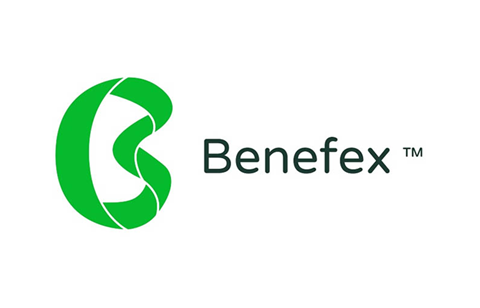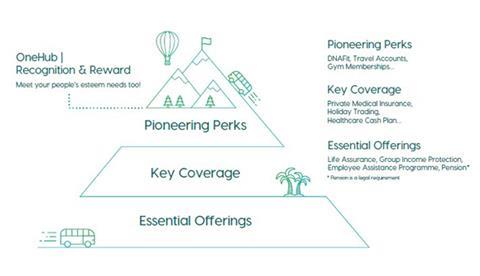
Eight in ten employees underestimate the value of their total reward by up to 30%.
When you think about this, it’s absolute madness that the majority of people who work for your company have no idea what they get. A new generation is entering the workforce, bringing a very different set of expectations and values beyond a competitive package of pay and benefits. Employers need to provide elements of work that didn’t exist just 10 or 15 years ago:
- Experiential careers
- Social media interactions
- Employee wellbeing initiatives
- Engaging physical workspaces
In terms of what an employer can deliver, these elements can be grouped under three interlinking umbrellas: Employee experience, personalisation, and total rewards - which was my focus when presenting at this year’s Zellis Connect event.
The workplace is evolving
To be competitive in the market you operate in, you need to be able to attract and retain the best talent. Benefex have been saying for years that employees have become ‘consumers of the workplace’. So, as well as offering competitive salaries and benefits, employers need to look at the micro interactions your employees have with your business, purposefully designed or not.If employee engagement is the Holy Grail all businesses are looking to achieve, then your employee’s experience is the journey of how they get there. For example, I know that right now – just two weeks before Christmas – a huge chunk of us are using Amazon Prime, just because it’s convenient. Did any of us need to learn how to use Amazon? Probably not – it’s intuitive and well-designed, so you keep going back. The more you use a product, the easier it is for you to advocate for them to your friends and family. And each touchpoint or ‘micro interaction’ needs to be as frictionless as the experience they have when buying on Amazon.
Employee experience
Your employee experience trickles into everything your company does. If you offer a bad experience to your people, your customers will know about it soon enough. Whether that’s through frustrated and short-tempered customer service, or through fragmented and disjointed employee-customer relationships because of unusually high turnover.
The key experience touchpoints have been categorised by author Jacob Morgan: Technology, culture, and physical environment – all three of which can be boasted in a total reward statement.
Total Reward
Why offer a total reward statement?It’s simple, really. It offers transparency to your people, thereby helping you to increase engagement and retention. Plus, it helps you to demonstrate your commitment to your employees, both now and in the future. As a result, you can use it as a fantastic selling tool at recruitment stage to allow your HR team to showcase your EVP at a glance. An intelligent TRS will go one step further and help you to segment the messaging within to highlight benefits which employees of a similar age or role have found appealing. Plus, in this decade, it’s essential for a TRS to be brought online so that it’s easily accessible on mobile as well as desktop, and shows real-time data.
When it comes to showcasing your total reward, the non-financial offerings you display will depend on the type of organisation you are. But, fundamentally, it should be aligned to a reward and benefits version of Maslow hierarchy of needs:

So, what’s typically included in a total reward statement?
Here’s how we like to set them out:
Benefits
Health • Income protection • Wealth • Retirement
Compensation
Base pay • Variable pay
Worklife
Paid time off • Flexible working
Reward and recognition
Performance management • Recognition
Career development
Diverse career opportunities • Development opportunities
This all looks great, but why don’t employees know about it?
Sixty-four percent of all employers who have invested in benefits fail to tell their employees about them at all. That would be like Apple launching a brand-new product but not advertising it. Key to any organisation’s cultural success is communicating your offering well – otherwise there’s not much point in having them at all! Globally, employers are losing £22.75bn through employee turnover and absence because they fail to communicate their reward & benefit offerings effectively. There are a whole host of on- and offline options you can utilise to make sure you personalise your communications and reach everyone in a way that will resonate. But it’s also worth remembering that a TRS is itself an effective communications tool. If you’ve signposted employees to where to find their statement, the nature of TRS is self-explanatory, easy to follow, and all-inclusive, so it communicates to your employees itself.
All in all, offering your employees that comprehensive summary of what you deliver for them will pay dividends in improved engagement, increased benefits take-up, and employee advocacy across the business. Those employers who invest in showcasing their offering through a clear, concise, real-time and easy-to-use total reward statements find their retention is improved, their recruitment package is more attractive to top talent, and their culture is one of transparency and safety.





























